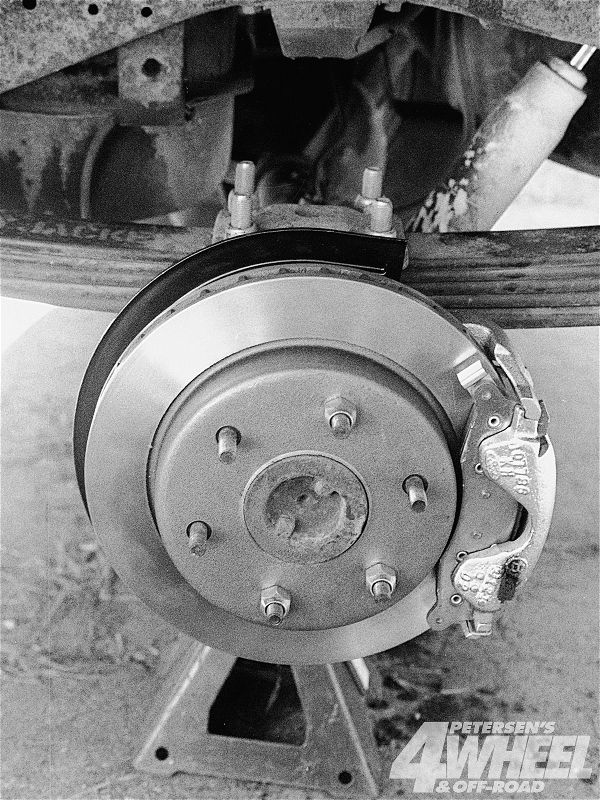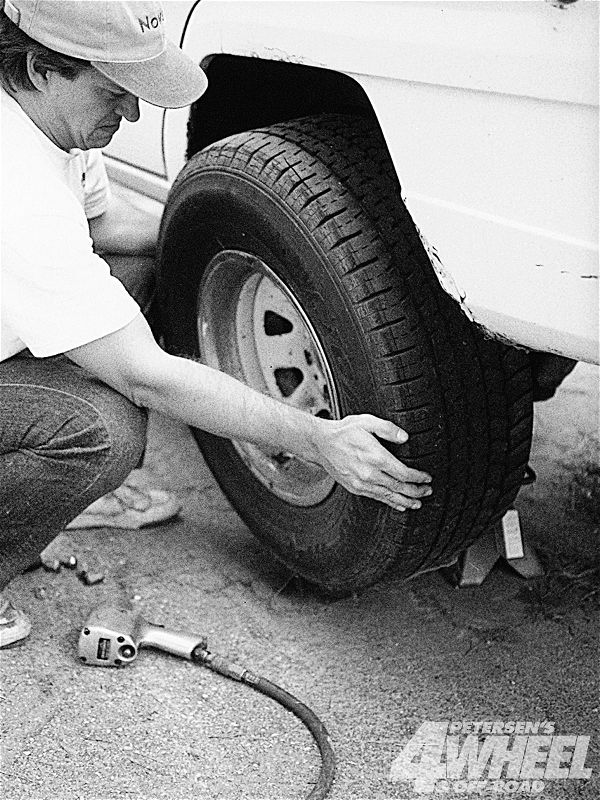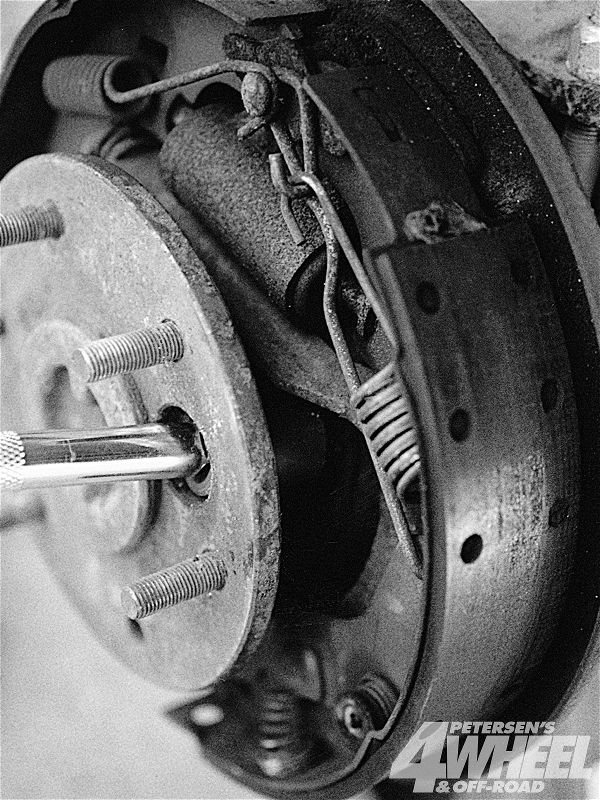 Rick Péwé
Editor-in-Chief, 4Wheel & Off-Road
Rick Péwé
Editor-in-Chief, 4Wheel & Off-Road
The majority of us are saddled with factory-equipped drum brakes on the rear of our 4x4s, and quite a few of us still pump the pedal to stop drums on the front axle as well. Without a doubt, disc brakes on the front of any vehicle are an improvement over drums. Recognizing that, most manufacturers started switching to discs on their 4x4s in the early '70s, or at least offered the option. In fact, one of our most-asked tech questions is how to retrofit older GM rigs with later-model front disc brakes, which we show how to do this month in "Dana 44 Front Disc Swap."

In the four-wheel-drive arena, the rear disc scenario has been severely lacking, even though performance and passenger cars have used them for quite a few years. As SUVs became more popular, four-wheel discs on a four-wheel drive became a reality, with the Jeep Grand Cherokee and the Isuzu Rodeo among the first to have them. These manufacturers know that disc brakes on the rear make for better stopping on the road and lead to safer handling characteristics, not to mention superior off-road performance.
 After securely blocking the front tires, place the rear axle on jackstands and pop off the rear tires and wheels. Remember that neither the transmission nor the parking brake is restraining the vehicle because the rear axle is in the air. The old drums need to come off next, which can cause some grief on older systems. The brake shoes sometimes need to be retracted from the drum by turning the adjuster screw inside the assembly with a brake spoon or a screwdriver. Keep some penetrating oil handy also, as the center of the drum may be rusted onto the index circle of the axleshaft.
After securely blocking the front tires, place the rear axle on jackstands and pop off the rear tires and wheels. Remember that neither the transmission nor the parking brake is restraining the vehicle because the rear axle is in the air. The old drums need to come off next, which can cause some grief on older systems. The brake shoes sometimes need to be retracted from the drum by turning the adjuster screw inside the assembly with a brake spoon or a screwdriver. Keep some penetrating oil handy also, as the center of the drum may be rusted onto the index circle of the axleshaft.
But grabbing a set of slick stoppers off one of these rigs at a junkyard for a swap costs more than you think, even without considering the fabrication costs incurred to figure out how to bolt them onto your older rig. And going to your local fabrication or race-prep shop can set your bank account back even further, if you even have a bank account. One common trick is to use front disc stuff and weld weird brackets in place and hope for the best. We've seen this done, and while quite a few setups are way trick and work great, others are downright dangerous, either falling off the axle or breaking while braking.
So how does the unlucky drum driver do a rear-disc conversion the right way the first time? We pondered that question for a while, wondering if the amount of work involved, as well as the bottom-line cost, would be worth the increased safety and reliability of converting to rear disc brakes. At our disposal for testing was a '79 Jeep Cherokee used for towing a trail-rig-laden trailer weighing about 5,000 pounds, for a GCVW of about 10,000 pounds. The factory drum/disc combo on this fullsize boat is barely adequate without trailer brakes, so Los Angeles freeway morons and steep mountain downgrades stress the factory brakes-and our nerves-just a tad too much.
To decide if disc brakes were affordable, easy to install, and worth the effort, we talked with Mike Jonas at Stainless Steel Brakes. Jonas suggested the company's new disc brake kit for '74-'91 fullsize Wagoneers and Cherokees with Dana 44 rears. Featuring single-piston floating calipers and semimetallic shoes, the kits come complete with all attaching hardware and parts, even the brake fluid and gear oil you might need. Jonas said the kit is a true bolt-on, with no cutting, grinding, or welding involved, and that any regular backyard mechanic can handle the installation.
 On this Dana 44 axle, the backing plate and axle retaining flange are held to the housing by four bolts. These can be accessed through the hole in the axle flange by using a deep socket or an extension. With a drum setup like this, sand and grit can get washed in during stream crossings and packed into every cavity. The only way to clean out the crud is to take the drums off and hose everything down.
On this Dana 44 axle, the backing plate and axle retaining flange are held to the housing by four bolts. These can be accessed through the hole in the axle flange by using a deep socket or an extension. With a drum setup like this, sand and grit can get washed in during stream crossings and packed into every cavity. The only way to clean out the crud is to take the drums off and hose everything down.
After a phone call, a few days wait, and a few hours of installation time, we found the results impressive. The kit truly is bolt-on, the braking is better than ever, and the technical support over the phone was excellent. Going to discs in the rear seems to be decidedly safer than the old drum setup.
PhotosView Slideshow













